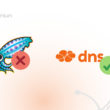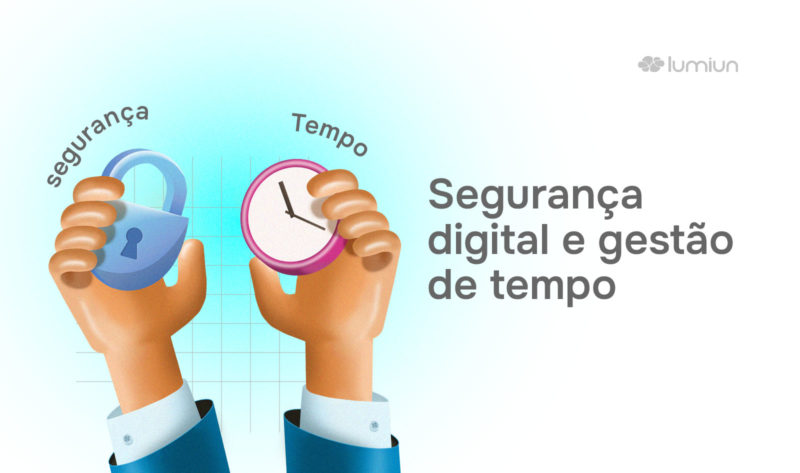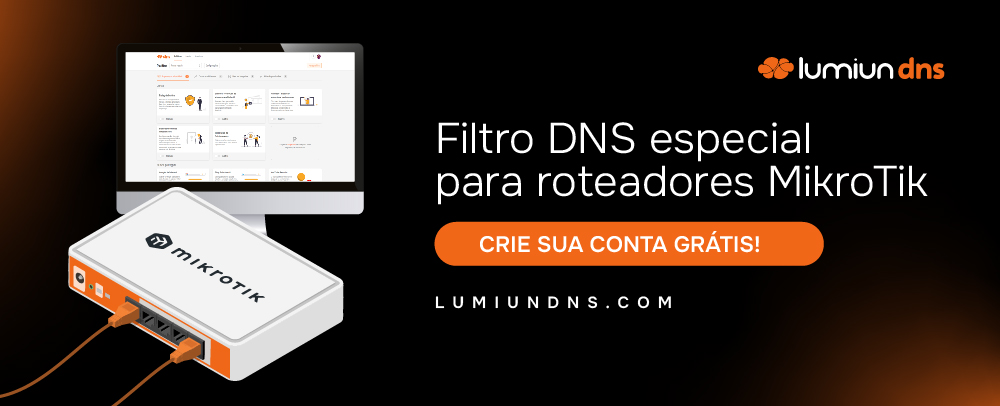In the extremely competitive universe of Small and Medium Enterprises (SMEs) , achieving the balance between productivity and protection is undoubtedly a constant challenge. In this scenario, where digital threats are constantly evolving and, at the same time, operational efficiency can determine the success or failure of a company, two elements stand out: digital security and time management . In addition, these factors are interdependent, and their integration may be the key to sustainable GMES growth.
When compared to large corporations, SMEs face unique challenges . In fact, these companies are often targeted by cyber attacks due to the perception of greater vulnerability and, at the same time, need to optimize the use of their limited resources to remain relevant in the market. In addition, increasing phishing and ransomware , for example, demonstrates the urgency of prioritizing cyber security in organizations. On the other hand, the waste of time with inefficient processes affects the delivery of services and the relationship with customers .
In this article, you will find out how digital security and efficient time management can turn the routine of small and medium businesses. First, we will address this material the most common threats and benefits , as well as the financial and operational impacts of security failures. Finally, we will see how time optimization can transform the business routine.
The strategic role of digital security in SMEs
Small businesses are constantly exposed to digital threats ransomware and p history attacks , which can cause significant damage. According to the IBM Security survey in 2023, about 62% of cyber attacks are directed to small and medium enterprises. Also, in a scenario where most of these businesses do not have the proper preparation to deal with these threats, the financial and reputational risk is increasing.
Contrary to popular belief, digital security goes beyond data protection: it is actually a strategic investment. In addition, companies that prioritize modern solutions, such as firewalls and automatic backups , can avoid critical interruptions and strengthen consumer confidence .
This means that treating security as a cost can be a fatal error for small businesses. Therefore, it is essential to invest in accessible and effective technologies not only to protect digital assets , but also to avoid significant financial losses and preserve the company's image .
The growing digital threat for small businesses
attacks directed to SMEs have grown alarming in recent years. According to a study by Sophos noted that more than three quarters of cyber incidents were focused on small and medium enterprises. In addition, the report highlighted the evolution and sophistication of the tactics used by invaders as technologies advanced. For example, remote encryption was a widely used strategy, where an unmanaged to try to encrypt files on other systems by accessing network .
Protecting the company's system goes beyond installing an antivirus . proactive approach , such as:
- Regular updates
- Solutions to detect suspicious activities
- Continuous Network Monitoring
It is essential to face digital security as a strategic pillar . Thus, SMEs can transform an area of vulnerability into a true competitive differential .
Why are SMEs frequent targets of cyber attacks?
Small and medium enterprises are seen by cybercriminals as an easy -to -attack gateway , mainly due to the lack of robust safety systems and specialized teams. Moreover, what often happens is that entrepreneurs underestimate the importance of digital protection , creating a false sense of security , which in turn makes them even more vulnerable to sophisticated attacks .
The use of outdated technologies is one of the main factors that increase this vulnerability. In fact, old operational and software without regular updates have loopholes that cybercriminals can explore to access data and compromise entire networks.
In addition, cybercriminals have the perception that SMEs are less prepared to deal with cyber incidents. Meanwhile, large corporations invest millions in safety , while SMEs often do not have enough resources to adopt more advanced solutions, becoming preferred targets .
According to a survey by Serasa Experian, conducted in 2023 , only 23% of small and medium -sized Brazilian companies invested in cyber security . As a result, the lack of prioritization places these companies at a significant disadvantage , allowing easily exploit safety breaches
Investing in basic solutions such as automated backups and next -generation firewalls can make a big difference . Therefore, SMEs need to understand their vulnerabilities and seek viable and realistic to strengthen their defense .
Financial and time impacts of a security failure
A security failure can bring high financial costs to SMEs , such as:
- Spending on data recovery
- Regulatory fines
- Loss of valuable contracts
In addition, impacts result in even greater losses, especially in markets where customer confidence is critical.
The impact on time is significant. In fact, companies that suffer cyber attacks face long periods of inactivity to solve the problems caused by the incident. Consequently, this lost time impairs productivity , delays projects and affects customer service , bringing a significant negative impact on the organization's results.
The impacts go far beyond the short term. In addition, pitches and customers may lose confidence in the company , making it difficult to recover after the incident. In fact, the reputation of the organization is an intangible asset , especially in markets where transparency and responsibility are highly valued.
Prevention of these impacts holistic approach , which in turn combines technological solutions and team training to protect the company against catastrophic failures .
Time Management: A Challenge and a Need for PMES
Efficient time management is one of the biggest challenges faced by small and medium enterprises . In fact, mismanagement of time can lead to rework, delays and loss of valuable opportunities. In the case of small businesses, each minute counts and should be used as best as possible.
Lack of optimized tools and processes is one of the problems faced by SMEs . Undoubtedly, these resources , managers cannot prioritize tasks effectively and monitor the progress of activities . Consequently, the result is the frequent loss of deadlines , the neglect of important commitments and the fall in the general performance of the company.
As the time lost affects the competitiveness of SMEs
Time wasted on inefficient activities represents significant expenses for smaller companies. In addition, manual and disorganized rocks consume more time and also result in rework, errors and delays , damaging delivery and the end result of the company .
In the most competitive markets, this can make the difference between conquering or losing a valuable customer . In addition, poor time management directly impacts the customer experience . For example, the lack of communication , delays in care and difficulties in complying with deadlines compromise the image of the organization , leading to dissatisfaction and, often, to the loss of important contacts .
Although these problems may seem minimal, however, the long -term impact may be immense, with a cumulative and devastating effect on the organization.
Companies that do not prioritize process efficiency tend to show slower growth than those that can manage time more efficiently . On the other hand, wasting time on unnecessary or repetitive tasks innovation capacity and prevents the team from focusing on valuable expansion opportunities .
Tools that optimize the routine of small businesses
Technology has become an indispensable ally for SMEs in optimizing their routines. Thus, among the main task management tools, stand out:
- Asana : Ideal for organizing projects, monitoring deadlines and attributing responsibilities clearly.
- Trello : A visual platform that uses frames and cards to facilitate tasks and priority definition.
These tools offer greater control over the progress of activities, promoting more efficient and structured management. In addition, cloud -based platforms are essential for optimizing management and access to team information. Among others, the main options are:
- Google Workspace : Offers an integrated collaboration tool suite, including email, documents, spreadsheets and cloud storage.
- Microsoft 365 : Provides complete productivity solutions, with applications such as Word, Excel, Teams and safe storage.
These platforms guarantee quick and safe access to data, allowing companies to manage remote teams or decentralize their operations without compromising productivity and security. In addition, they offer flexibility and scalability, facilitating adaptation to the specific needs of each business.
Another essential resource is process automation . In addition, such as chatbots for customer service, automatic invoice issuance systems and CRM platforms help save time and reduce error incidence .
Performance monitoring systems help managers identify bottlenecks and evaluate the efficiency of operations . Real -time data delivery allows rapid adjustments , avoiding waste of time and optimizing the results of the organization . Consequently, these solutions increase efficiency and improve customer experience.
The intersection between digital security and time management
The connection between digital security and efficient time management is more intense and deep than it seems. In fact, a well -structured security system helps reduce the inactivity time caused by cyber incidents , while process automation allows small businesses to optimize their operations efficiently . Therefore, this integration is essential for the sustainable and continuous growth of SMEs.
Process automation , such as updating backup systems , ensures not only data protection but also time saving . Also, when these tasks are done manually, they can be longer and susceptible to human failures . On the other hand, with the help of automation , managers can have more time for strategic decisions , ensuring system safety .
In addition, adopting cloud -based safety solutions protection and efficiency benefits . In addition, these tools are simplified , do not require constant maintenance , which allows teams to focus on the company's main activities .
Intersection between these two areas shows that investing in intelligent technology can bring double advantages to the company. Consequently, organizations that integrate safety and time management in their operations can operate more efficiently , reduce risks and meet market demands more quickly . Thus, this integration is fundamental to long -term success.
Automation of processes as a competitive differential
Process automation has proven to be a true competitive differential for SMEs. In addition, it reduces the time spent on repetitive tasks while increasing efficiency and reduces the chances of human errors. For example, the use of automatic backups , which ensure continuous data protection without the need for manual intervention.
Continuous monitoring tools play a key role in this process as they allow you to detect and solve problems before they impact their operations. Thus, this aspect is essential to avoid constant interruptions and ensure business continuity, especially in a competitive environment where even the slightest failure can mean significant losses. According to a study conducted by Ostec and Neotriad , with the objective of understanding the profile of internet use in Brazilian companies, showed that about 57% of respondents face major difficulties to perform their activities if there was unavailable resource.
Automation facilitates integration between different sectors of the company. For example, solutions that connect areas such as sales, financial and customer service allow information to be shared in real time, which maximizes team productivity.
Reduction of inactivity time with robust safety
A robust security strategy is indispensable to help shorter companies reduce inactivity time. In this sense, well -configured protective tools, such as intrusion detection systems , prevent cyber attacks from paralyzing operations and ensuring business continuity.
Attacks such as ransomware , for example, often result in blocking access to valuable data, which forces the company to interrupt its activities until the problem is resolved. To illustrate this growing threat, the 2024 cyber threats report, published by Sonicwall, recorded a 51% growth compared to the same period of the previous year, thus reinforcing the need to address security as a priority.
Preventive solutions, in turn, help SMEs to resume these operations quickly, reducing the damage to the fullest. Among the most effective features in this context are automatic backups and real-time data replication .
Advanced security systems, for example, can monitor real -time network activities, allowing the identification of anomalies that may be signs of an invasion. With this approach, proactive detection considerably reduces the impact of possible attacks, protecting both data and team time. In this sense, adopting a proactive digital security is an essential investment for companies that want to remain competitive in the market. More than that, this strategy goes beyond avoiding problems, directly reflecting the productivity of the teams and ensuring that resources are used in a way to activities that add value to the business.
Good practices to unite safety and productivity
The integration between safety and productivity becomes viable only when the SMEs adopt good practices that promote both aspects jointly. In this context, it is essential to align strategies that guarantee digital protection without compromising the workflow. In addition, the use of appropriate technologies and well -defined processes contributes to achieving this balance efficiently.
The adoption of restricted access policies , for example, ensures that only authorized users can access sensitive data and critical company systems. Another important practice is to implement automatic updates on systems and devices, preventing outdated software from becoming a vulnerability point for cyber attacks.
Empowering teams to identify threats and use tools efficiently is critical to strengthening the security of the company. For example, regular training workers help employees recognize phishing and quickly respond to possible security incidents. In addition, these initiatives promote a culture of awareness, significantly reducing the risks associated with human errors.
Finally, the integration of technological solutions to optimize time and strengthen security is an indispensable practice. Process automation tools and real -time security monitoring allow you to achieve greater productivity without compromising information integrity.
Building an effective digital security strategy and time management
As we can see throughout this material, digital security and time management are intrinsically connected . In this sense, the integration of these two factors can directly impact the results and productivity of the business, promoting greater efficiency and resilience in the face of market challenges.
In this sense, it is the company's responsibility to ensure that these two elements are effective. To help with this goal, we have prepared some essential steps :
Initial steps for PME's
The first step in implementing an effective strategy is to make an initial diagnosis of operations . Through this analysis, it is possible to identify vulnerabilities in digital security and, at the same time, recognize time bottlenecks that impair the productivity of the company. Based on these data, it is possible to create a targeted and efficient action plan, aligned with the specific needs of the business.
A basic digital security plan is another important strategy. It includes the implementation of measures such as firewalls , clear access policies and regular backups , aligning the company's processes and objectives.
Parallel to these measures, it is equally important to map internal processes to identify which tasks consume the most time of employees. From this survey, managers can prioritize the automation of repetitive activities and thus adopt tools that increase the efficiency of operations. In addition, this analysis is critical to optimizing the use of available resources , thus ensuring efficient and complete management.
Finally, involving the entire team in the implementation process is important to the success of the strategy. When employees understand the importance of safety and time management , they become essential allies in the execution of the plan, contributing to the creation of a more productive and safe organizational culture .
Intelligent investments: prioritizing what matters
Investing with intelligence is essential for small and medium -sized companies that want to balance digital safety and efficient time management . In this sense, the first step is to identify the solutions and tools that will have a real impact on your company's daily life. For example, integrated management software and cloud -based security systems can be powerful allies not only to meet immediate needs, but also to keep up with the growth of your organization.
It is important to prioritize the most critical areas for the operation of your company. In terms of digital security , sensitive data protection such as customer data and financial information is critical. In the case of time management , it is necessary to optimize routine tasks and reduce rework for more productivity and fast return .
When evaluating technological solutions to optimize the company's daily life, cost-benefit is one of the most important criteria. For this reason, many affordable tools offer robust features , allowing smaller companies to benefit advanced technology without compromising the available budget. Thus, PTAR for modular plans or flexible signatures is a way to reduce initial spending and at the same time ensure access to resources adapted to business needs.
A strategic investment helps to avoid waste and maximize the results of your organization. Tools that integrate digital security and time management , such as platforms focused on process automation and threat monitoring , help increase productivity for small businesses and protect in a single system.
Common barriers and how to overcome them
Small and medium enterprises face specific challenges digital security practices and time management tools . Barriers such as budget limitations and cultural resistance can delay progress and increase vulnerability to cyber threats and loss of productivity .
complete and multifaceted work , ensuring that the company achieves success. Here's the main barriers faced in this process and the best way to overcome them:
Cultural resistance within the teams
Cultural resistance is digital safety and time management practices . In fact, employees often face changes as unnecessary or overly complex , especially when new technologies are implemented. This behavior may prevent or slow the adoption of solutions by creating a climate of dissatisfaction or distrust .
To overcome this resistance, it is necessary to adopt a participatory approach from the beginning . Employees need to be involved in choosing tools and defining processes as a way to ensure greater acceptance . When teams feel they are heard and have their opinions considered, they are more likely to accept changes as part of the company's cultural evolution .
The practical training is very valuable. In addition, training should clearly and directly how new solutions simplify tasks and make everyday life easier, promoting a practical understanding of the guaranteed benefits. In addition, continuous communication of positive results , such as increasing efficiency or reducing problems , reinforces the value of changes and encourages employees to remain engaged .
Internal communication is another effective strategy. Transparently explain the reasons for changes, the expected impact, and the guaranteed benefits for everyone involved helps to create a greater confidence environment .
Budget limitations and how to circumvent them
Financial limitations are another common obstacle for SMEs, especially when the budget is restricted and there are many priorities . In this context, the perception that cyber security and management tools require high investments can lead managers to postpone the implementation of these solutions , consequently exposing the company to unnecessary risks . In addition, the lack of resources can lead to a false sense of security, which makes it even more urgent to adopt appropriate preventive measures.
One way to circumvent this challenge is to look for scalable and affordable solutions that allow you to start with the basics and evolve as the business grows . Cloud -based security software , for example, offer initial plans with competitive prices and essential features.
In addition, prioritizing critical areas helps to allocate resources even more efficiently . For example, it is possible to invest in measures such as:
- Automatic backup
- Access control
- Employee training
These initiatives help prevent major problems with relatively low . Small improvements in time management , such as simple process automation , already have a significant impact on productivity for small businesses .
Lack of technical knowledge
The lack of technology expertise is a barrier for many SMEs, especially those that do not have dedicated IT staff . As a result, this situation impairs the choice and configuration of the appropriate tools , and increases vulnerability to human errors and cyber attacks .
Overcoming this barrier is directly related to team training . Digital security training and the use of technological tools can help make employees more confident and prepared to deal with changes. Hiring specialized consultancies or outsourcing critical services such as security monitoring and system maintenance can be the ideal solution for companies facing this challenge.
Safety and time management as foundations of growth
Cyber security and time management are indispensable pillars for SME success in an increasingly competitive and dynamic . On the one hand, security protects the company's assets from external threats , while time management ensures that resources are used efficiently , maximizing productivity and delivery capacity of the organization.
The integration of these two areas allows SMEs to operate with agility and safety , reducing the impact of incidents and optimizing processes . Tools aimed at automating repetitive tasks, threat monitoring and workflow organization are fundamental to achieving these goals.
More than technology, it is necessary to invest in affordable and scalable solutions , not only to overcome challenges, but also to create a solid foundation for the company's sustainable growth. The adoption of strategic measures and investments in scalable solutions allows SMEs to exceed challenges and develop an organizational culture focused on innovation and efficiency .
Treating cyber security and time management as strategic priorities is more than just a choice; It is an indispensable need for organizations. By investing in these areas, SMEs not only protect their information , but also increase their efficiency , gaining the confidence of customers and partners and ensuring a competitive positioning in the market .











